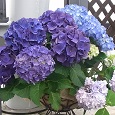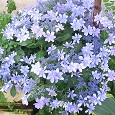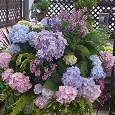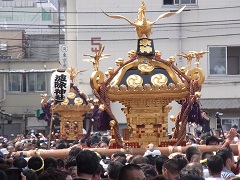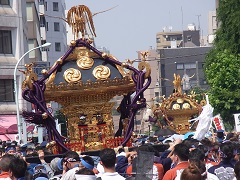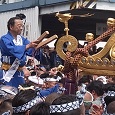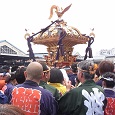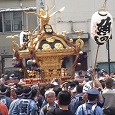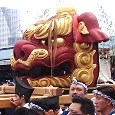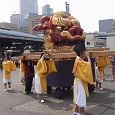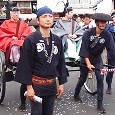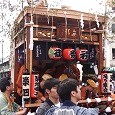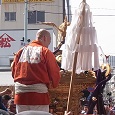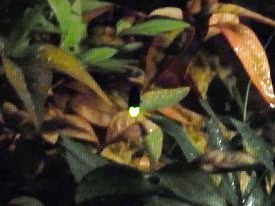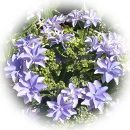
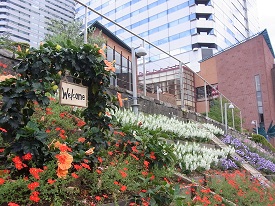 June 6 is the "Takumi" of twenty-four season old calendar. This refers to the time when the sun's sutra reaches 75 degrees, and refers to the season when sowing seeds of ears such as grains with awns and rice and wheat.
June 6 is the "Takumi" of twenty-four season old calendar. This refers to the time when the sun's sutra reaches 75 degrees, and refers to the season when sowing seeds of ears such as grains with awns and rice and wheat.
The annual "Mini Garden Guide Tour" takes a walk around the park with the guidance of a green adviser at the Pocket Plaza "Flowers / Water / Trees" in Harumi Triton Square.
The theme this time, held on June 4th, is "The garden with herbs."
Various herbs are planted around the "Flower Terrace", "Green Terrace", and "Slope Garden" along the Asashio Canal.
*Herbs are generally useful plants that are used for scenting dishes, preservatives, fragrances, dyes, insect repellents, odor repellents, etc., and have various medicinal effects as medicinal herbs, but originally It is also a broad concept that represents grass or herbal plants. However, there are some harmful substances that are highly medicinal and have side effects, so care must be taken. Seeds, fruits, roots, bark, etc. are often referred to as spices in similar useful plants.
*In a bite, the fragrance of herbs is broad, including citrus, floral, exotic, resin, spice, and tree.
*Lavender is one of the most popular garden items among herbs.
(a)Angstifolian system (also known as English lavender / Truelavender / Common lavender) (b) Stescus system (also known as French lavender / Spanish lavender) (c) Den Tata system (also known as Fringe Dravender) (d) Petrost ecus system (also known as race lavender) (also known as lavender) (ravender)
①Scent and vivid colors 2 Available for many purposes 3 The pleasure of growing is attractive.
*The so-called chamomiles (chamomiles / chamomiles) are representative of the annual grass "Jerman Camomile" with fragrance only in flowers, and the perennial "Roman Camomile" with a unique aroma on flowers, stems and leaves. There are two species, each of which is a separate genus of the Asteraceae.
I learned a lot through the Plants Walk again this time.
Among the herbs mentioned this time, the "curry plant" that emits a spicy scent like curry from the stems and leaves, "valerian", which is said to have a sleep introduction / sedation / relaxation effect, and the smallest of the flowers of the family Orth, "St. John's Worth", etc., were impressive.
By the way, "Lavender Aroma Tycho" is a horticultural species of English lavender.
From left, lavender aroma Tycho, hisop, monalda, olegano, German chamomile





From left, Polyj, Common Marlow, Curry Plant, Valerian, St. John's Worth,





In the Tokyo region, on May 26, one of the seasonal creatures and seasonal observations of the news, "Declaration of the True Flower of Hydrangea", was issued, but in the park, hydrangea "dance party" (upper right image), hydrangea "If you sing in the rain", hydrangea "Majical series (Autumn Hydrangea)" You can also enjoy unique hydrangeas.
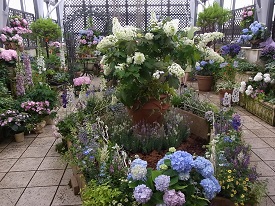
"hydrangea garden 2015" opens at the salon space "Royal Room" with terrace on the 10th floor of FANCL Ginza Square (Ginza 5).

